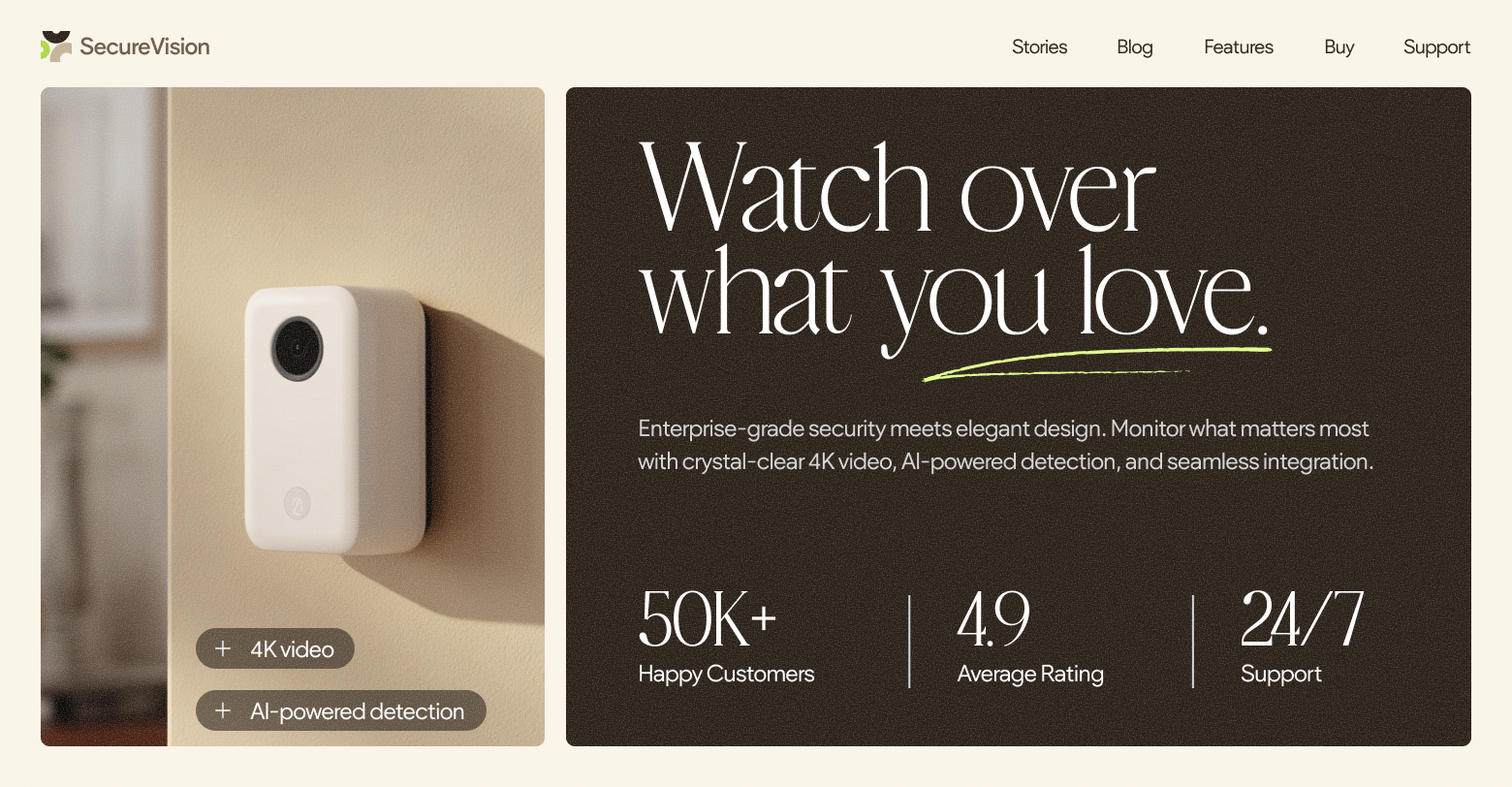"Cody," you may be asking yourself, "why do I need a Photoshop alternative? I already know that Duda comes with a built-in photo editor that lets me crop and resize images, adjust brightness, add filters that rival Instagram, put funny mustaches on pictures of clients that don’t pay on time, and more.”
Well, inquisitive reader, sometimes you’ll need to take your image editing to the next level, beyond what Duda can reasonably provide inside its already powerful editor. But there’s no need for
your agency to break the bank to do so!
The default industry tool for editing images is
Adobe Photoshop . And while it’s an amazing tool for power-users, the price tag and the feature set can be a bit overwhelming. The good news is there are lots of free or inexpensive Photoshop alternatives. But which one is right for you? GIMP vs. Paint.NET, Pixlr vs. Canva, PicMonkey vs. BeFunky — there are so many platforms to evaluate and compare.
To save you some time, we reviewed some of the top PhotoShop alternatives out there, including:
- GIMP
- Paint.NET
- Pixlr
- Canva
- Stencil
- PicMonkey
- BeFunky
We hope you find these reviews and summaries useful as you look for a tool that meets your advanced image design needs.
The default industry tool for editing images is Adobe’s Photoshop. And while it’s an amazing tool for power-users, the price tag and the feature set can be a bit overwhelming. A quick Google search will show you a slew of free Photoshop alternatives, but I’ve taken the time to narrow the search down for you.
Here are the top four best (and free) alternatives to Photoshop, that you would actually want to use.
GIMP
You may have already heard of
GIMP
, the free open-source image editor that rivals Photoshop in both power and complexity. GIMP stands for GNU Image Manipulation Program, and you can use this tool to accomplish almost anything you’re looking to do in Photoshop — there may just be more steps involved or a few custom plugins to download.
There are a couple off-shoots of GIMP, including GimpShop and GimpPhoto, which both try to make the user interface more similar to Photoshop. However, these aren’t as actively developed, so I recommend sticking with the original. At the time this post was updated,
GIMP 2.10.18
is the latest version of this software and was announced on 02/24/2020. This update includes PSD support improvements, a consolidated user interface for merging down and anchoring layers, and even a new 3D Transform tool to rotate and pan items . If you want something truly comparable to Photoshop, for absolutely zero cost, GIMP is the best you will find.
PAINT.NET
Paint.NET isn’t quite as advanced as Photoshop and GIMP. It’s more of a mid-level editor that focuses on ease-of-use, but has many of the essential intermediate features that would normally require Photoshop, like layers, history, an action manager, and a whole host of effects that will make most image tweakers and amateur designers happy.
I’ve personally used Paint.NET for years to create great-looking graphics for websites, video games, online videos and more. It has everything you need to take your image editing to the next level, and will serve you well. Not bad for a program that doesn’t cost anything, right?
Unfortunately, Paint.NET is Windows only (Windows users, you don’t have to read the rest of the article—this is what you’re looking for).
Pinta
is an attempt to create a tool like Paint.NET for Mac, but in my experience it was unreliable. At the time this post was updated,
Paint.NET 4.2.10
is the latest version of this tool and was released on 02/14/2020.
PIXLR EDITOR
Do you need to edit an image right now? No time to wait to download software? Then
Pixlr
is your answer.
Pixlr offers two different free tools for editing images: simple, stripped down version for beginners called Pixler X and a more advanced option for professionals called Pixlr E. Both editors open almost any image format such as PSD (Photoshop), PXD, Jpeg, PNG (Transparent), WebP, SVG, etc. And both products use AI for automatic background removal and other functions to help you create professional looking photo edits.
Pixlr is fully cross-platform, so you can use it on Windows, Mac, Linux, etc. and is surprisingly easy to use.
Since it runs entirely in the browser, Pixlr is handy if you need to edit an image while you’re on someone else’s computer and don’t want to install software, or working on an underpowered computer like a netbook.
Personally, Pixlr has filled the void Paint.NET left in my heart when I switched to Mac. Give it a try; I think you’ll be impressed. They also offer
paid plans
with access to additional tools and features.
Canva
Canva
has to be one of the most popular image creators around.
One of the things that immediately sets Canva apart from many of the other other image editors on this list is it comes with pre-sized templates for all kinds of design projects such as posters, online ads, presentations, menus, book covers—the list goes on and on.
Canva also allows you to create custom image sizes, add layers to your images, adjust transparency, and upload your own icons, images or anything else in a .JPEG or .PNG format.
The image editing tool also offers a free plan that works great for quick and relatively basic projects.
Paid plans
are also available that provide you with more features intended for larger teams.
STENCIL
Stencil
is a lesser known image creating app, but it’s one of the better ones out there if you’re looking to create social media and blog images.
Stencil exists online as an app and as a Google Chrome Browser extension and has quite a few editing options:
- Use a starter template
- Create custom image sizes
- Add icons, graphics and background from their resource
- Upload your own backgrounds or icons
- Easily add a watermark for your photos
- Adjust transparency on text/images
- Go from one image size to another without starting over so your images look the same across all social channels (something Canva doesn’t do unless you upgrade)
There are quite a few similarities to what this can do compared to Canva, but there are some differences that I like including being able to use the Google Chrome extension to quickly create an image. Both
free and paid plans
are available.
PICMONKEY
If you need something that will help you polish up photos for social media and ads and is simple to use,
PicMonkey
is probably your best bet.
As far as photo touch ups go, this is one of the better ones that you can find with a low price tag. You can:
- Sharpen images
- Crop and scale
- Create a collage style picture
- Add fonts
But photo editing isn’t the only thing that PicMonkey offers. You can also add layers of shapes and fonts, along with transparency, to provide a special touch to your photos. Plus, you can upload your own icons and images.
Summing Up
While there are many choices of image editor out there, I think the ones I’ve listed here stand out above the rest, and are actually worth a try. GIMP is definitely the number one contender for those out there looking for a full PhotoShop replacement; however, each one of these editors brings something different to the table and I’ve found all of them enjoyable to work with. And I hope you will too.
Related Posts
By Ilana Brudo
•
November 13, 2025
Don't let AI-generated websites cause day-two headaches. Learn why agencies need governance and control, and how Duda's AI stack offers speed without the risks.
By Shawn Davis
•
November 6, 2025
Learn how Jared Broussard's agency scaled client websites by switching from WordPress to Duda, saving time and costs while boosting efficiency and growth.
By Ilana Brudo
•
October 30, 2025
Stop the magic, start the security. Uncover the hidden risks of AI "vibe coding" in web development and build safer websites for your clients.
Show More
Originally posted on 6/12/2014. Updated on 4/14/2020.














